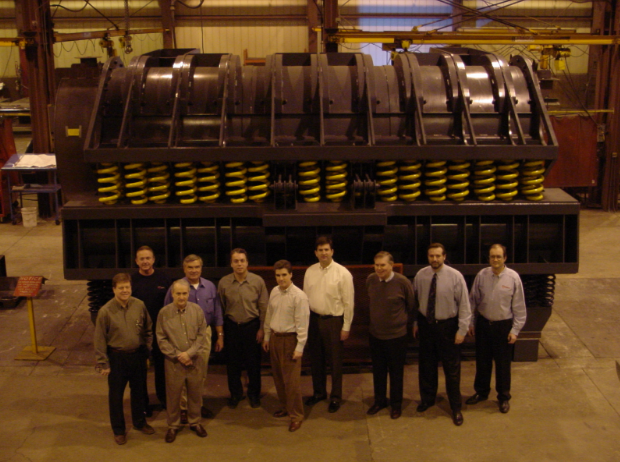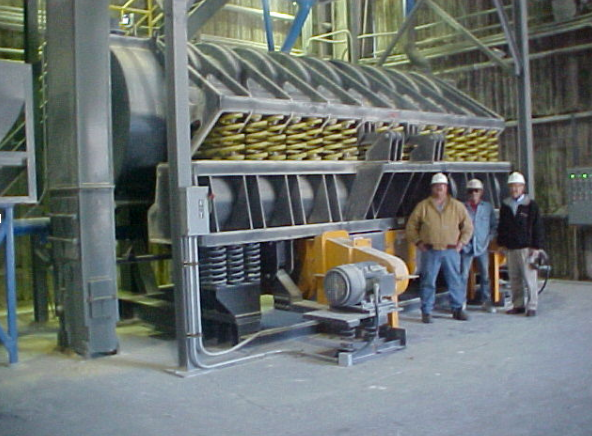Close to 15 years ago, General Kinematics had a glass ceiling moment. The engineers created and launched the largest vibratory grinding drum in the company’s history. The product debut was an amazing engineering feat a standalone fact, but also until that point, a number of structural problems had existed in the previous drum designs, which caused occasional cracking where the spring plates were mounted to the bodies.
When the designers focused on sketching a larger blueprint, the solution to the issue became clear. The difference? The rib that supports the plate now wraps continuously all the way around the unit. To this day, all sizes of GK’s vibratory grinding drums have continued to be extremely successful and low maintenance.
Successful applications of GK Grinding Drums
One successful application of grinding drums is related to fly ash: a resource that is collected, ground into a powder by the drum, and then used to make cement in the creation of concrete. Utilizing this fly ash leads to a reduced carbon footprint because it requires less processing than alternative processes, which require heating and oxidation. So using the grinding drum in the creation of fly ash commodities not only benefits the environment, it also ends up being a more economical solution.
Another one of the most successful grinding drum applications to date is of zirconium oxide. All of the specific details are proprietary, thus undisclosable. But basically: a crystalline structure is first created out of zircon sand and is then crushed by a very large General Kinematics grinding drum. The drum grinds down the said material into a superfine texture that is only 5 microns or about 0.0002 inches in size. The ground material is then used to create products, most notably, brake pads.
A third application—which continues to spark many people’s interest—is glass grinding. The buzz around glass exists because it can be ground down so fine that it can be used as a substitute for a portion of sand that’s included in cement mix. The process benefits the environment because it prevents glass from being put into landfills and when glass is included in the mixture, cement is more resistant to absorbing water.
Continued Innovation: Grinding Drum Tools
Up ahead? One of the most exciting, in-the-works projects at General Kinematics is a tool that will be used in addition to grinding drums: a high-frequency screen (with a patent soon to come). The screen will be used to help separate small particles—the ones created from the drum—into different sizes. A few other customer tests will lead to new potential projects, including ones related to fly ash, iron oxide and aluminum oxide.
At General Kinematics, we continue to innovate and push the limits of the abilities of vibratory equipment. Stay tuned for more problem-solving solutions!









